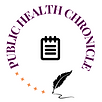Public Health News Analysis
Update on Polio by WHO - IHR Emergency committee

Content Editor : Dr Sangya Chaudhary
Updated on :
February 18, 2023
Polio, WHO, International Health Regulations, IHR
The IHR Emergency Committee, concerning the ongoing events and context involving transmission and international spread of poliovirus, held the 34th meeting as per the International Health Regulations (2005) (IHR) on 25 January 2023, convened by the WHO Director-General.
The Emergency Committee reviewed the data on wild poliovirus (WPV1) and circulating vaccine derived polioviruses (cVDPV) in the context of global target of eradication of WPV and cessation of outbreaks of cVDPV2 by the end of 2023.
What is Poliovirus IHR Emergency Committee?
The IHR Emergency Committee, concerning events and context involving transmission and international spread of poliovirus, held its first meeting on 28 and 29 April 2014 and continues to meet every three months. It is currently chaired by Prof. Helen Rees and comprises of members and supervisors from different countries.
Recent update on wild polio virus
The committee noted that there has been no confirmed case of WPV1 in Pakistan since 15 September 2022, Afghanistan since 29 August 2022, Mozambique since 10 August 2022 and Malawi since November.
In the recent outbreak 22 positive cases were detected in Pakistan, 22 in Afghanistan and 4 in Mozambique.
Positive environmental samples were still being detected in 2023.
The next six months will be a critical opportunity to finally interrupt endemic WPV1 transmission.
Reasons for these cases were :
Presence of areas of insecurity and vaccine refusals, with a high number of zero dose children in southern Afghanistan. This also explained why the cases have been limited to specific geographical regions.
Gaps in immunization coverage and surveillance.
Recent containment breach at a vaccine manufacturer in the Netherlands, which resulted in WPV3 being detected in the environment.
Update on circulating Vaccine Derived Poliovirus (cVDPV)
The long distance international spread of VDPV2 has revealed a new risk phenomenon i.e. evolution of vaccine derived polioviruses in under-immunized pockets of populations who lack intestinal mucosal immunity in IPV-using countries.
cVDPV cases have been detected in Congo and Southern Africa, Sudan Yemen, Somalia, Indonesia, Mozambique, Jerusalem, London, New York, Montreal.
Reasons for these emergences?
Combination of inaccessibility, insecurity, a high concentration of zero dose children and population displacement.
Climate related disasters, including both flooding and drought, were causing greater vulnerability to several disease outbreaks, including polio.
Ongoing conflict in several polio-affected countries.
National elections in several affected countries.
Declining immunization coverage in several countries that previously maintained high coverage.
Conclusion
Committee unanimously agreed that the risk of international spread of poliovirus remains a Public Health Emergency of International Concern (PHEIC).
It has divided countries in 3 categories and extended temporary recommendations for a further 3 months, to be followed till the countries meet criteria to be declared as no longer infected.
‘States infected with WPV1, cVDPV1 or cVDPV3 with potential risk for international spread’, ‘States infected with cVDPV2 with potential risk for international spread’ and for ‘States no longer infected by WPV1 or cVDPV, but which remain vulnerable to re-infection by WPV or cVDPV’ , need to follow the temporary recommendations under the IHR to reduce the risk of the international spread of poliovirus, effective 1 February 2023.
The committee also urged that polio campaigns be integrated with other public health measures wherever appropriate, has strongly encouraged house to house campaigns be implemented wherever feasible.
It has noted and strongly supported the ongoing use of female vaccinators, enhancing access to households.
To read the complete news article by WHO - Click Here
.png)



